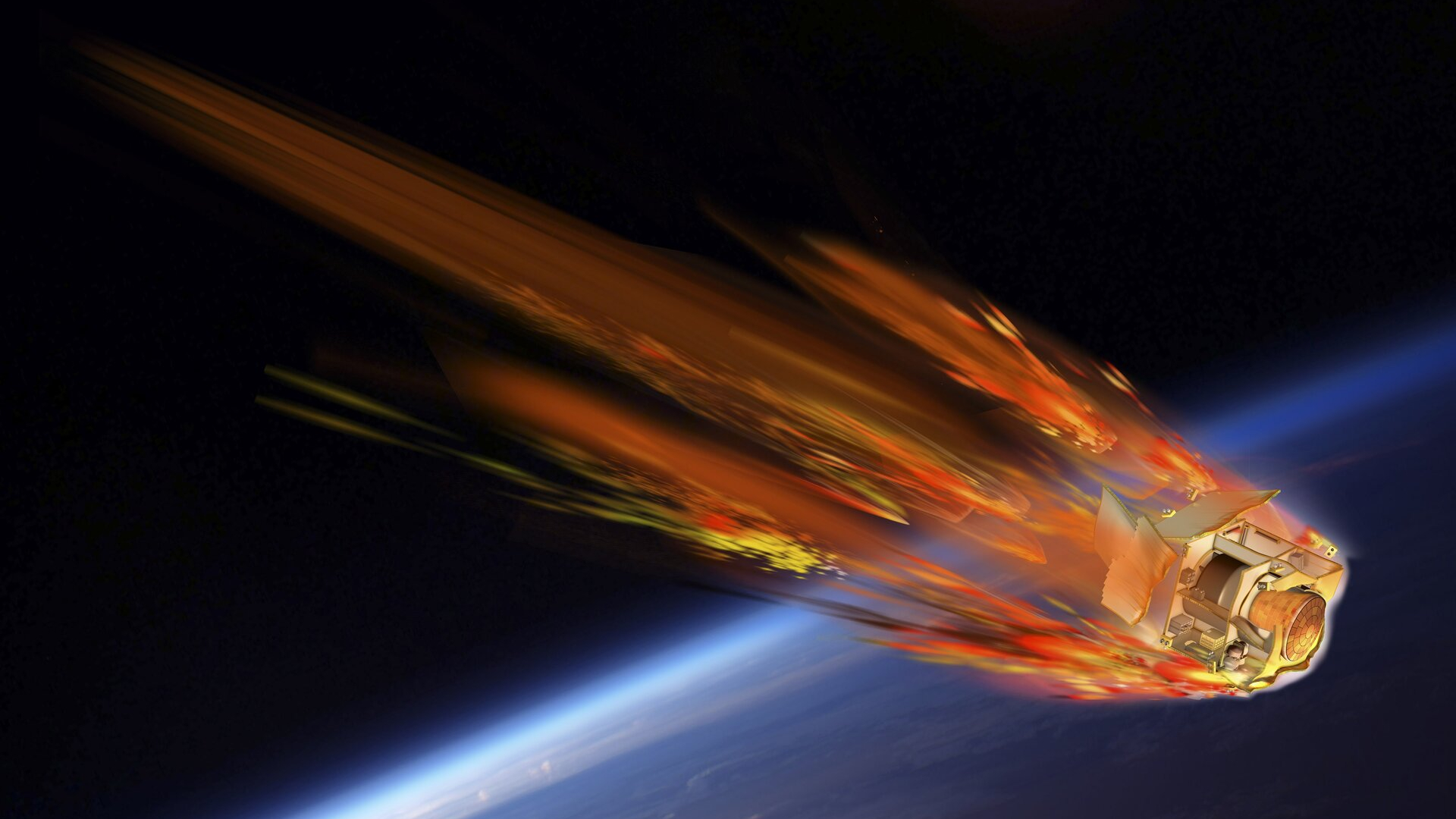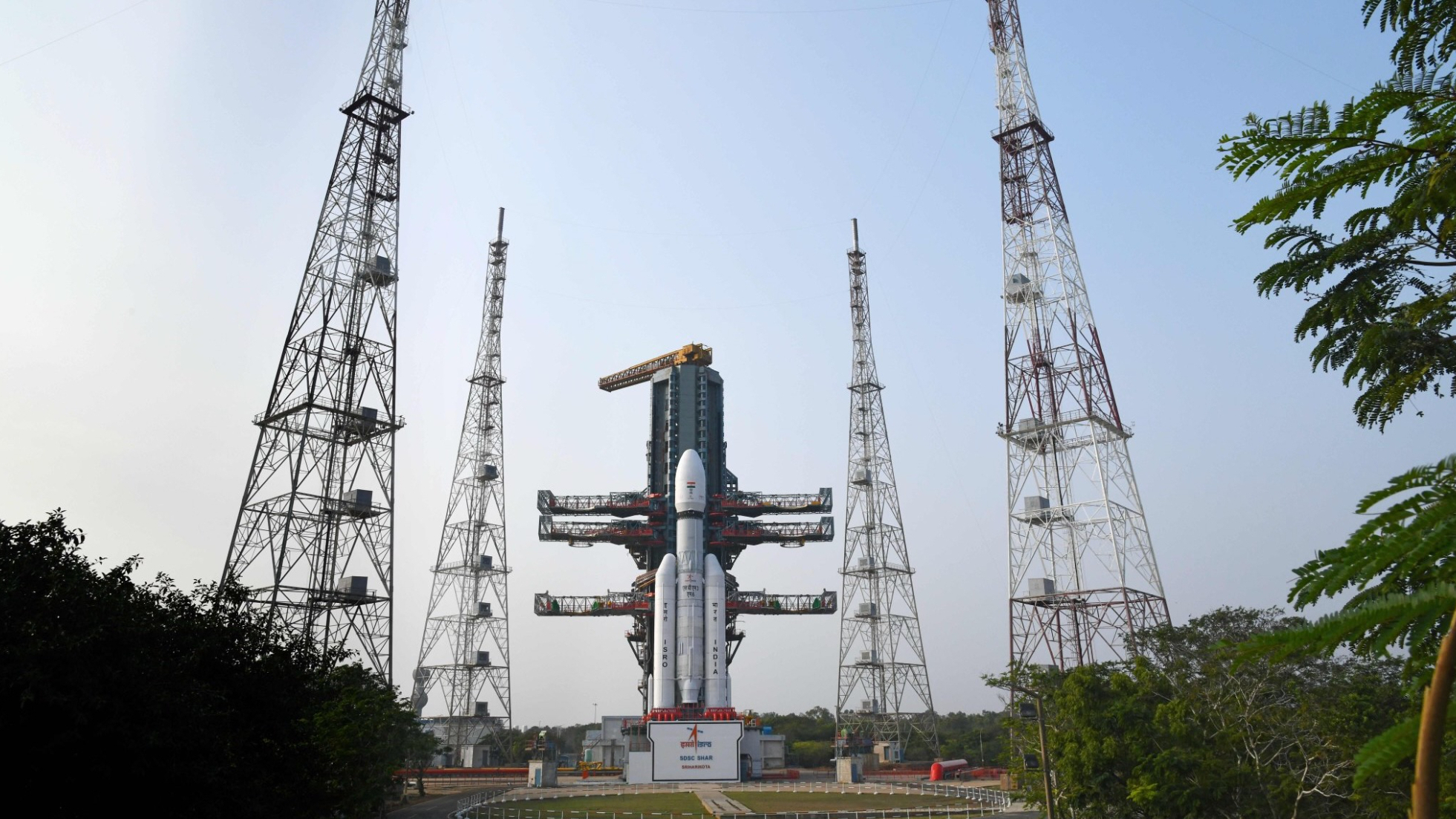Europe will launch a satellite in 2027 just to watch it burn
ESA wants to learn more about how satellites burn up during their return to Earth.

The European Space Agency (ESA) wants to launch a satellite to closely watch how it breaks up during its fiery reentry into Earth's atmosphere.
ESA has awarded a contract to European technology group Deimos to begin developing the Destructive Reentry Assessment Container Object, or DRACO for short. The spacecraft will aim to collect unique data as it reenters Earth's atmosphere and disintegrates. The mission is scheduled to launch in 2027.
The objective is to understand how satellites break up, so they can be designed to more fully disintegrate and burn up. The mission will also help assess how spacecraft reentry events affect the environment, studying how parts and particles from the spacecraft interact with the upper atmosphere and what byproducts are created.
To do this, part of the washing-machine-sized, 440-pound (200 kilograms) DRACO spacecraft will be designed to break up just like a normal satellite. But it will also include a specially designed, 15.7-inch (40 centimeters) capsule capable of surviving the tremendous forces of reentry while measuring temperatures and other forces.
Related: Burned-up space junk pollutes Earth's upper atmosphere, NASA planes find
After reentry, the capsule will deploy a parachute and, while it descends, transmit the valuable data collected by DRACO's four cameras and 200 sensors before it is lost to the oceans.
"Reentry science is an essential element of the design for demise efforts. We need to gain more insight into what happens when satellites burn up in the atmosphere as well as validate our reentry models," Holger Krag, ESA's head of space safety, said in a statement.
Breaking space news, the latest updates on rocket launches, skywatching events and more!
"That's why the unique data collected by Draco will help guide the development of new technologies to build more demisable satellites by 2030," Krag said.
The DRACO initiative is part of ESA's ambitious Zero Debris charter, with the goal of stopping the further creation of space debris by 2030. Last year the agency also pioneered a guided, safe reentry with the Aeolus mission.
"DRACO is an exciting mission that will shine a light on many of the unknowns during satellite reentries," Tim Flohrer, head of ESA's space debris office, said in the same statement.
The mission will "get us out of the chicken-and-egg loop and create a different data set to calibrate our systems and models, and will advance the implementation of zero-debris technologies in the near future," Flohrer said.
The DRACO mission is being developed at a time when the number of launches grows globally, with a range of countries and companies building megaconstellations of satellites in low Earth orbit. The most notable of these is SpaceX's huge and ever-growing Starlink network, which currently consists of more than 6,300 active spacecraft.

Andrew is a freelance space journalist with a focus on reporting on China's rapidly growing space sector. He began writing for Space.com in 2019 and writes for SpaceNews, IEEE Spectrum, National Geographic, Sky & Telescope, New Scientist and others. Andrew first caught the space bug when, as a youngster, he saw Voyager images of other worlds in our solar system for the first time. Away from space, Andrew enjoys trail running in the forests of Finland. You can follow him on Twitter @AJ_FI.
